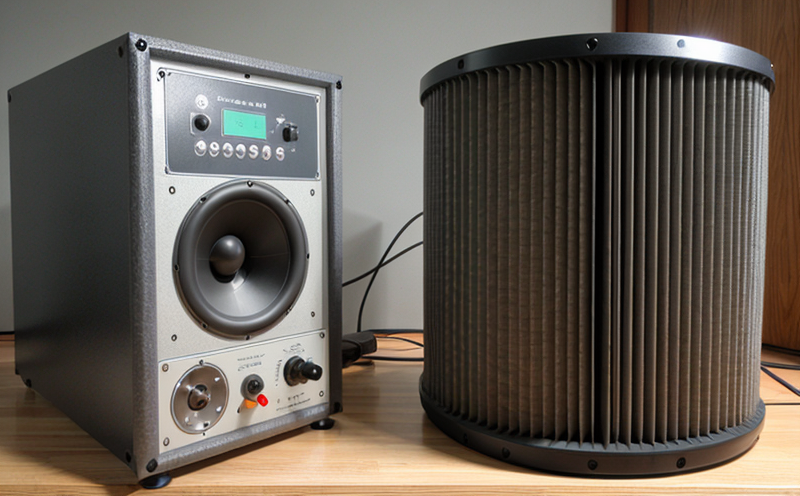ISO 20283-3 Vibration Testing of Accommodation Spaces on Ships
The ISO 20283 series is a comprehensive set of standards designed to ensure that ships, and their onboard equipment, meet the highest safety and performance criteria. Among these, ISO 20283-3 specifically addresses the vibration testing requirements for accommodation spaces on board ships. This standard ensures that the living quarters are designed with minimal levels of noise and vibration to provide a comfortable environment for crew members and passengers.
The testing process outlined in ISO 20283-3 aims to identify any potential issues related to structural integrity, comfort, and safety within the accommodation spaces. It is crucial because vibrations can originate from various sources such as machinery, engines, and external environmental factors like waves and wind. These vibrations, if not controlled, could lead to discomfort and even compromise the structural stability of the ship.
The testing procedure involves a series of steps designed to simulate real-world conditions that might affect accommodation spaces aboard ships. This includes measuring the vibration levels at specific points within the space using accelerometers or other suitable instruments. The data collected from these measurements is then analyzed against the thresholds defined in ISO 20283-3.
One of the key aspects of this test is understanding the impact of different types of vibrations on human comfort. For instance, high-frequency vibrations can cause discomfort, while low-frequency ones may lead to structural damage over time. The testing ensures that both human comfort and long-term durability are considered during design and manufacturing stages.
Accurate measurement techniques play a vital role in ensuring compliance with ISO 20283-3 standards. Instruments such as accelerometers provide precise data on vibration levels, which helps manufacturers make necessary adjustments to their designs before final assembly. This approach not only enhances comfort but also contributes significantly towards reducing maintenance costs and extending the lifespan of ships.
Another important consideration in ISO 20283-3 is the role of structural design in mitigating vibrations within accommodation spaces. By incorporating advanced materials and innovative engineering solutions, designers can minimize unwanted vibrations caused by ship motion or onboard equipment operation. This proactive approach ensures that even during rough seas, passengers will experience minimal disturbance.
Furthermore, compliance with ISO 20283-3 is essential for maintaining high standards of safety and quality in the maritime industry. It serves as a benchmark against which all ships are evaluated, ensuring consistency across different vessels worldwide. As the global shipping sector continues to grow, adherence to such international standards becomes increasingly important.
Overall, ISO 20283-3 provides a robust framework for testing and validating the performance of accommodation spaces on board ships. By following this standard, manufacturers can produce safer, more comfortable living environments that meet both current regulatory requirements and future expectations in terms of comfort and durability.
Applied Standards
| Standard | Description |
|---|---|
| ISO 20283-3:2017 | Vibration testing of accommodation spaces on ships, including installation and operation. |
| EN ISO 2631-1:2015 | Human exposure to vibration - Part 1: Measurement, analysis and evaluation. |
| ASTM E964-18 | American Society for Testing Materials standard practice for measuring human response to vibration. |
Benefits
Compliance with ISO 20283-3 offers numerous benefits beyond just meeting regulatory requirements. For instance, it helps manufacturers improve the design and functionality of their products by identifying potential areas for improvement early in the production process. This leads to enhanced product quality, reduced warranty claims, and increased customer satisfaction.
Additionally, adherence to these standards fosters innovation within the industry, encouraging companies to explore new technologies and materials that can further enhance performance and reliability. Such advancements contribute significantly towards maintaining a competitive edge in an increasingly demanding market environment.
The standard also promotes better communication between various stakeholders involved in the design and construction of ships. By providing clear guidelines on what constitutes acceptable levels of vibration, it ensures everyone is working towards common objectives, thereby streamlining project management processes and reducing conflicts.
In terms of operational efficiency, compliance with ISO 20283-3 can result in significant cost savings over time. Reduced maintenance costs due to fewer structural issues, lower fuel consumption thanks to optimized machinery placement, and improved crew productivity all contribute towards achieving substantial financial gains for ship owners and operators.
From an environmental perspective, minimizing vibrations has positive impacts on both the immediate surroundings of ships and global ecosystems as a whole. Lower noise levels translate into quieter environments around ports and harbors, reducing stress on local wildlife and human populations alike.
International Acceptance and Recognition
The ISO 20283 series has gained widespread recognition among maritime professionals worldwide due to its comprehensive approach towards addressing various aspects of shipboard safety and comfort. Many major shipping companies have incorporated these standards into their internal quality management systems, recognizing them as best practices in the industry.
Government agencies responsible for regulating marine activities also frequently reference ISO 20283-3 when assessing compliance during inspections or audits. This adds credibility to any company that demonstrates its commitment to upholding international standards through certification processes based on these guidelines.
The acceptance of this standard extends beyond national borders, making it easier for shipbuilders and suppliers operating globally to harmonize their practices across different regions. It also facilitates smoother trade relations between countries by providing a common language understood by all parties involved in maritime projects.





